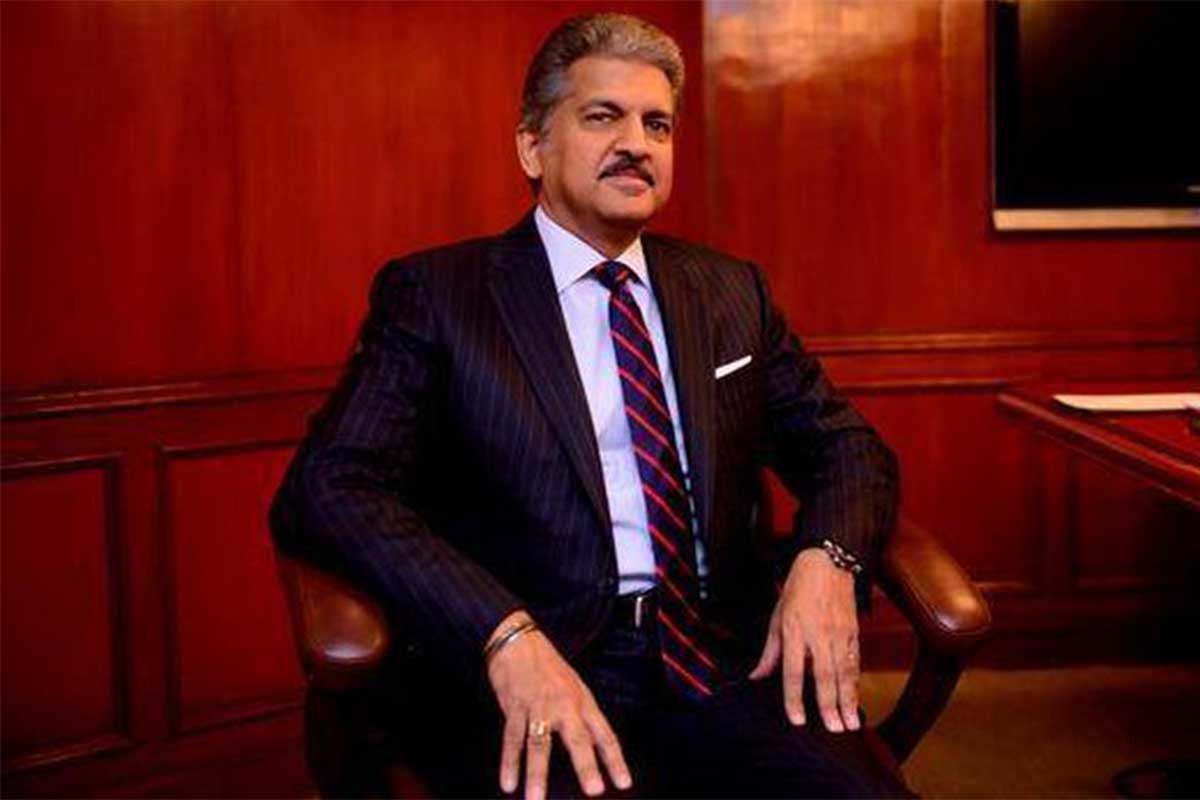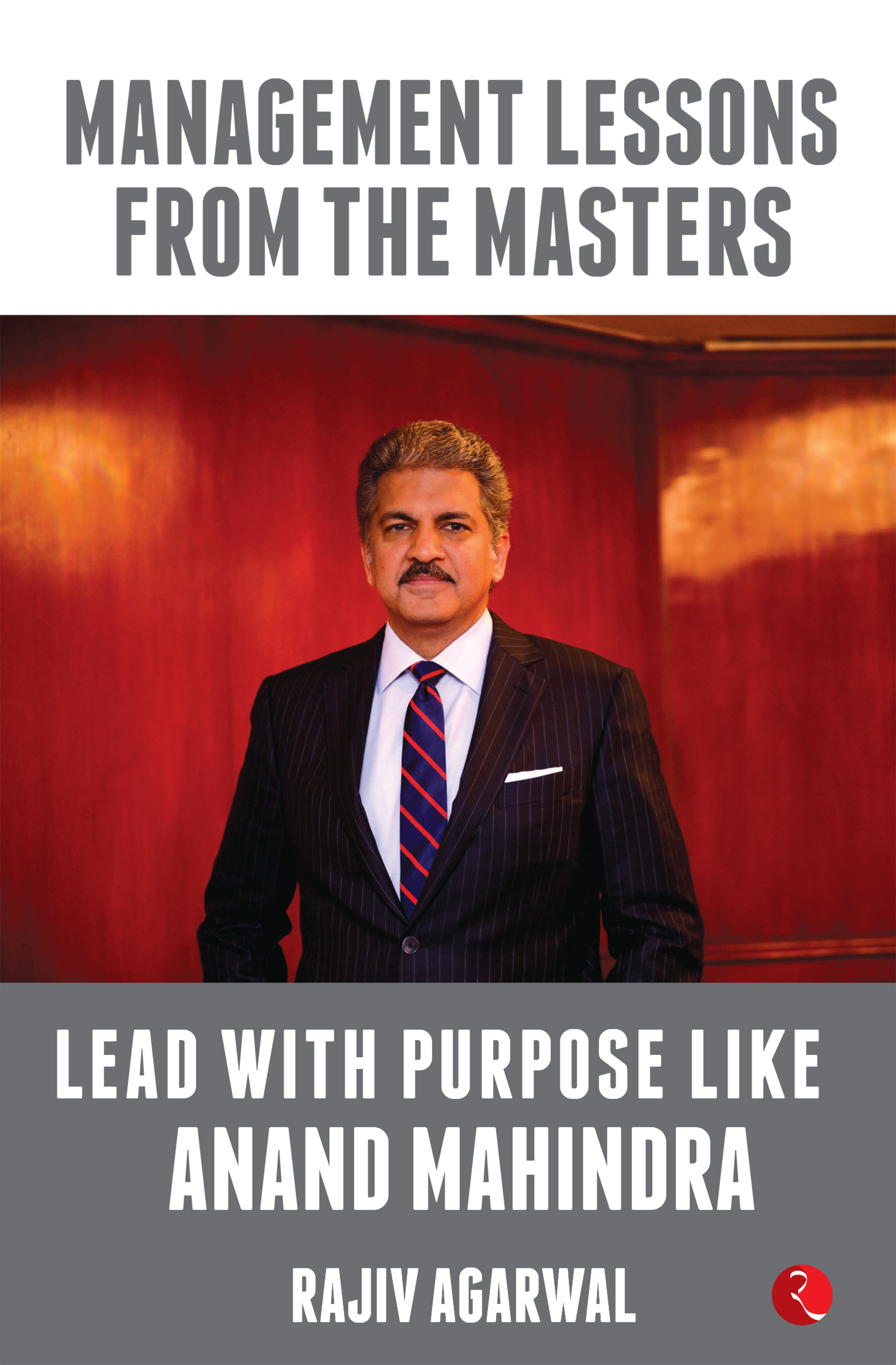Invest With An Eye On The Future – ‘Lead With Purpose Like Anand Mahindra’ by Rajiv Agarwal

INVEST IN TOMORROW’S TECHNOLOGIES WHILE THE PRESENT CORE BUSINESS IS STILL STRONG
It is natural for business houses to make investments to fuel their growth; what doesn’t come as naturally to many businesses is investing in future-oriented projects. While investments in sectors that show profitable returns in the present times offer a sense of solace, it is riskier and requires greater foresight to spend on products and technologies that may be nascent at present but possess immense potential. Mr Anand Mahindra’s investment style for the M&M Group has been directed at the future with the goal of leapfrogging the competition.
In 2018, Fortune India published a report on Mr Anand Mahindra, applauding the uncanny foresight and vision in his forecast of the rise of battery-powered vehicles or electric vehicles (EVs) in India. The editorial stated that Mr Mahindra possessed the three key attributes that make entrepreneurs successful: grit, instinct and the ability to undertake course corrections whenever needed. The glowing report was based on an incredible decision Mr Anand Mahindra had made to invest in the sector of EVs. It had been at a time when few competitors were exploring something so nascent and fledgling, but Mr Mahindra foresaw that the sector had a promising future. He bet that the rising pollution due to vehicular emissions in most Indian cities would raise the demand for EVs in India. A research report published by Morgan Stanley Research in May 2017 agreed with his judgement, predicting that EVs could become a $60 billion opportunity for India in the next decade.
In 2010, Mr Anand Mahindra steered M&M to the position of the first leading player in this space by buying out Reva Electric, an electric vehicle company owned by Mr Chetan Maini. He renamed it Mahindra Electric (ME) and designated Mr Pawan Goenka as the chairman. Mr Mahindra was driven by three primary reasons for buying out Reva:
1. The need to offer less-polluting vehicles in India;
2. The expectations that battery prices would crash, thus making EVs affordable;
3. The opportunity to become leaders in the electric vehicle technology and components segment.
He has bet big on this industry and made elaborate strategic moves, expecting it to be a space where M&M can be the leader as well as the source of technology and components.
Since the acquisition, M&M has faced quite a bit of competition in the EVs sector in India. Comparable EVs made by Tesla, Nissan, Toyota and General Motors exist. Tesla’s initial model—the Roadster—debuted in 2008 at $109,000. In 2010, Nissan launched the Leaf—an all-electric, battery-operated car. General Motors also launched a comparable product in the same year—a hybrid called the Volt. The Volt used a gasoline engine to charge the battery for additional mileage. Finally, Toyota’s hybrid car—the Prius—also grew to become popular; however, this battery-operated vehicle was heavily subsidized under state government subsidies.
By comparison, Reva was priced at around `2.5 lakh— much lower than most of the contemporaries. Even so, it sold only a few hundred cars annually. Although the maintenance costs were less and the rides promised to be stress-free, Reva seemed only mildly popular with the audience.
In 2013, Mahindra launched the e20, a mainstream looking electric car. It was priced at `6.5 lakh. The e20 did not do well either, once again selling only about a hundred cars annually. Over the next five years, Reva’s fortunes did not change. This was a setback for M&M, especially since the company had invested in a futuristic factory with great hopes and also overhauled the product design. M&M had even undertaken an extensive rebranding of the product.
It was then that Mr Anand Mahindra realized where the group had been faltering: the battle in the EV sector could not be waged promisingly in the individual ownership markets; it had to be fought in the institutional market. Most of the individual buyers were unimpressed by the ‘coolness factor’ of driving an EV. They were also unsure of the government’s ability to provide sufficient charging points across different cities in India.
After wrapping his thoughts around the situation and realising the need for a course correction, Mr Mahindra moved quickly. In 2017, he forged a partnership with Ola, the popular fleet operator. Ola announced that it would lease hundred EVs from ME. M&M also signed on the dotted line with Lithium, a transportation company that ran on clean energy. Lithium required a competent EV with a range of 120–50 km, which could service its needs for a fleet car.
Alongside, Mr Mahindra entered into partnerships with bulk purchasers like Energy Efficiency Services Ltd (ESSL) in the public sector. ESSL is a JV of the public sector units under India’s Ministry of Power. It includes the National Thermal Power Corporation Limited (NTPC), the Power Finance Corporation, the Rural Electrification Corporation and the Power Grid Corporation. The agreement entailed that ESSL would purchase EVs by tender, and distribute them to various government departments. This would be an effort to replace the existing diesel and petrol vehicles. Surprisingly, the first of these tenders was won by Tata Motors, even though it was a surprise entrant. The conscious move towards environmentally efficient vehicles seems well-thought-out; in 2017, Tony Seba, a Stanford economist, predicted that all sales of diesel and petrol cars would cease by 2030!
Indeed, the strategic shift proved to be a step in the right direction for M&M. Soon, the group started noticing an uptick in the demand for its EVs. Meru, another aggregator like Ola, initiated a pilot project in Hyderabad with electric cars leased from M&M. Baghirathi, a Bengaluru-based, twenty-year-old car-hire company with a fleet of 3,000 conventional fuel cars, placed an order for 1,000 ME cars. Zoomcar, a company that offers self-drive cars on hire, also began to provide cars by ME in Mumbai.
Mr Mahesh Babu, the CEO of ME as of 2019, sums up M&M’s approach in the EV sector brilliantly. He says that the group has decided to use its investment not to create an aspirational product (like Tesla), but to become a mass-market brand with a product that can solve societal problems in India.

PURSUING GREATER PUBLIC GOOD
M&M’s pursuit of the EV sector highlights the group’s eagerness to accrue benefits for the entire ecosystem, including the country at large. The benefits of EVs would apply to the whole country and therefore, would become a line of business that furthers profits for its investors as well as contributes to public and environmental betterment.
Mr Pawan Goenka once stated in an article published in Fortune, with respect to EVs: when M&M as a group loses market share to other players, it would mean that the entire EV space is growing. This played out in the case of the petrol SUV space where Mahindra lost its leadership position to competitors like Maruti, Hyundai and Ford. However, in the case of EVs, the decision went beyond the hazard of losing market share—it threatened the company’s future. The group’s decision to pursue growth in the sector, despite the risks, reveals its interests in contributing to social welfare.
FUTURE ORIENTATION AND CONSTANT EXPERIMENTATION
Mr Anand Mahindra has maintained a close watch on the core business of his group and initiated investments that strengthen it for challenges to come. However, his investment focus has also spread to new businesses that branch away from the core business of M&M. For instance, during the late 1990s to the late 2000s, he launched a used-car portal (Mahindra First), a technology-led logistics business (Mahindra Logistics) and a venture for manufacturing boats (Mahindra Marine). He has also led the group into diverse areas, including hospitality, finance and software. As of 2011, these new areas of investment contributed to over 40 per cent of the group’s valuation.
In an interview with Harvard Business Review, Mr Anand Mahindra outlined his ambition for the group:
My aspiration is that M&M become one of the most customer-centric organizations in the world. If we focus on understanding our customers, we will be able to develop customer-centric innovations. By that, I don’t mean we should only ask customers for product ideas; I’m aware, of course, that Sony would have never developed the Walkman if it had listened solely to its customers.
He adds that he wants to follow the example of design firm IDEO, where consultants observe a customer vacuum the floor so that they can ideate what the product should do and what it should look like.
Mr Mahindra backed this lofty ambition with action. In the mid-1990s, he approved the development of a new concept car—the Scorpio (Chapter 16), even though the group lacked the financial resources that his Western competitors possessed. This new SUV came in at a total cost of $120 million—about one-fifth of what other auto companies would spend on a comparable project. It was perhaps the biggest gamble of Mr Anand Mahindra’s career so far. But instead of costing him his job, it went on to win numerous prestigious awards and also established the group as a serious global competitor in the automotive market.
PLAN AHEAD FOR FUTURISTIC INVESTMENTS
Mr Anand Mahindra has consistently displayed a knack for making investments that have the potential to reap rewards in the near future. His experiences have helped him develop the visionary thinking to forecast where the market is headed and work towards reaching there before competitors. Such forecasting, and the associated risks it entails of patiently waiting for the future to play out, requires a great deal of courage. Mr Anand Mahindra has demonstrated this ability in his investment in the EV sector—a step taken much in advance of competitors and with a vision to shape the future.
His buyout of Reva helped M&M become the first major player in the segment.
Futuristic investments have terrific potential for a business. But to implement them with minimal risk of failure, the business leader must have the ability to understand the market (in this case, the automobile market) and be willing to work patiently towards his or her goals. It is an approach that can work only when paired with a measured outlook that envisions the company as a significant player for tomorrow—whether in the sectors of SUVs, electric vehicles, solar technology or IT.
***
Read the book today.
***

